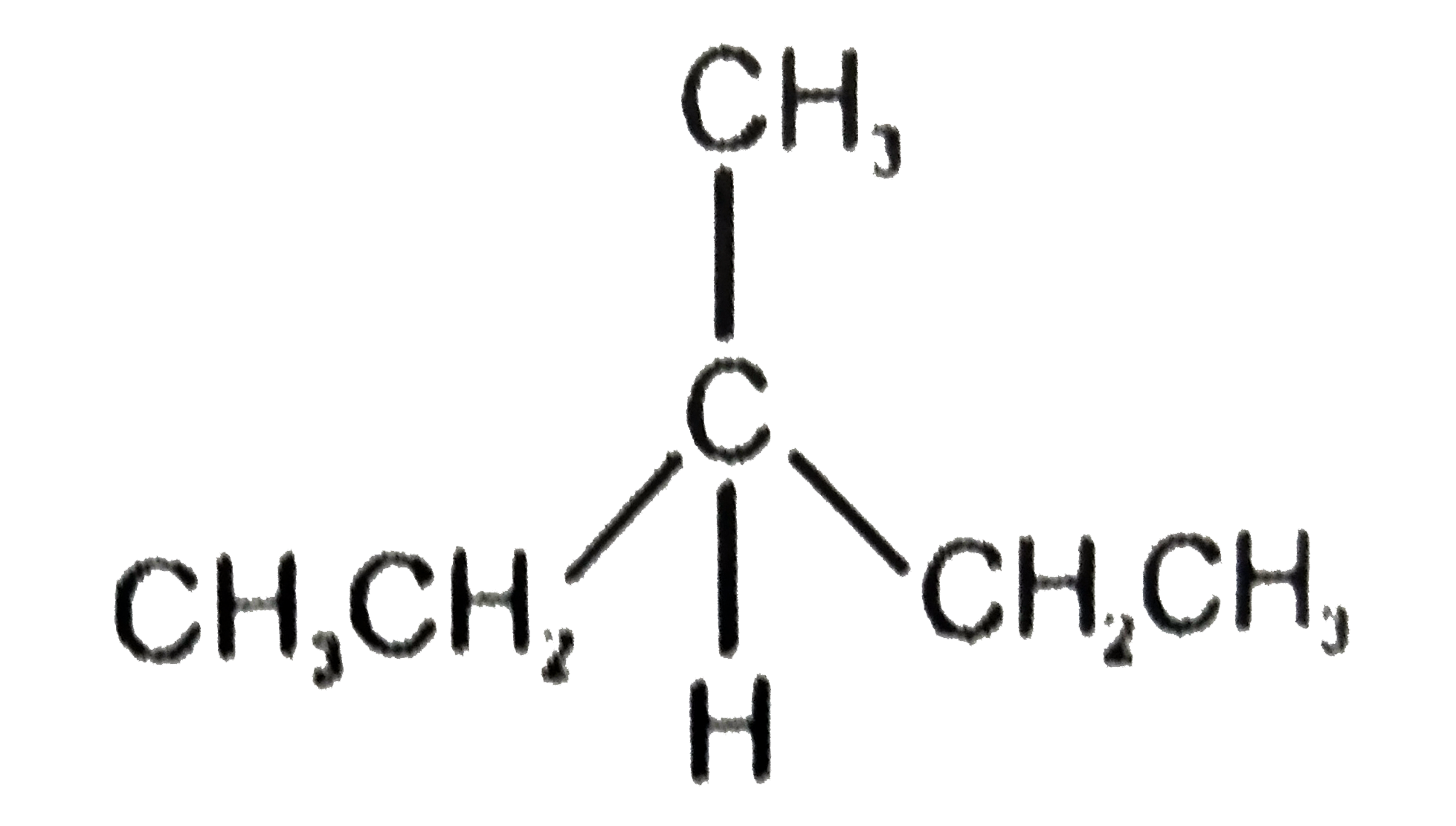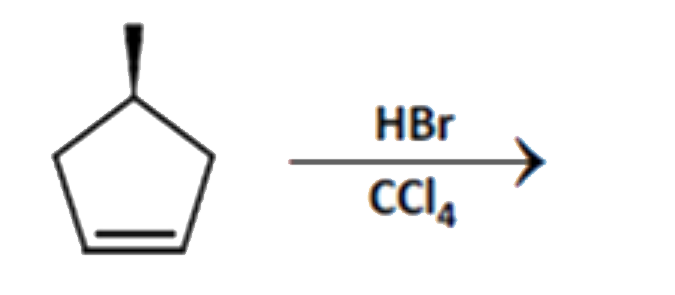Given the total number of isomers, including stereoisomers, obtained on dichlorination of paropane.
To determine the total number of isomers, including stereoisomers, obtained from the dichlorination of propane, we can follow these steps:
Step 1: Understand the Structure of Propane
Propane (C3H8) has a straight-chain structure with three carbon atoms:
HHH|||H−−C−−C−−C−−H|||HHH
Step 2: Identify the Possible Positions for Chlorination
Dichlorination means that we will be adding two chlorine (Cl) atoms to the propane molecule. The chlorine atoms can be attached to different carbon atoms. The possible positions for chlorination are:
- C1 (first carbon)
- C2 (second carbon)
- C3 (third carbon)
Step 3: Analyze the Isomers
1. Chlorination at C1 and C3:
- Both positions yield the same compound due to symmetry. The structure will look like:
ClCl||H−−C−−C−−C−−H||HH
- This compound can be labeled as Isomer A.
2. Chlorination at C2:
- Chlorination at C2 gives a different compound:
HCl||H−−C−−C−−C−−H||ClH
- This compound can be labeled as Isomer B.
3. Chlorination at C1 and C2:
- If one Cl is at C1 and the other at C2, we get:
ClCl||H−−C−−C−−C−−H||HH
- This compound can be labeled as Isomer C.
4. Stereoisomers:
- For the dichlorination at C1 and C2, we can have two stereoisomers (due to the presence of chirality). The two stereoisomers will be mirror images of each other (enantiomers).
Step 4: Count the Total Isomers
- From the analysis, we have:
- Isomer A (C1 and C3)
- Isomer B (C2)
- Isomer C (C1 and C2) with 2 stereoisomers (D and E)
Thus, the total number of isomers including stereoisomers is:
- 1 (Isomer A) + 1 (Isomer B) + 1 (Isomer C) + 2 (stereoisomers of Isomer C) = 5 isomers.
Final Answer
The total number of isomers, including stereoisomers, obtained from the dichlorination of propane is 5.
---
Propane (C3H8) has a straight-chain structure with three carbon atoms:
HHH|||H−−C−−C−−C−−H|||HHH
Dichlorination means that we will be adding two chlorine (Cl) atoms to the propane molecule. The chlorine atoms can be attached to different carbon atoms. The possible positions for chlorination are:
- C1 (first carbon)
- C2 (second carbon)
- C3 (third carbon)
1. Chlorination at C1 and C3:
- Both positions yield the same compound due to symmetry. The structure will look like:
ClCl||H−−C−−C−−C−−H||HH
- This compound can be labeled as Isomer A.
- Chlorination at C2 gives a different compound:
HCl||H−−C−−C−−C−−H||ClH
- This compound can be labeled as Isomer B.
- If one Cl is at C1 and the other at C2, we get:
ClCl||H−−C−−C−−C−−H||HH
- This compound can be labeled as Isomer C.
- For the dichlorination at C1 and C2, we can have two stereoisomers (due to the presence of chirality). The two stereoisomers will be mirror images of each other (enantiomers).
- From the analysis, we have:
- Isomer A (C1 and C3)
- Isomer B (C2)
- Isomer C (C1 and C2) with 2 stereoisomers (D and E)
- 1 (Isomer A) + 1 (Isomer B) + 1 (Isomer C) + 2 (stereoisomers of Isomer C) = 5 isomers.
The total number of isomers, including stereoisomers, obtained from the dichlorination of propane is 5.
Topper's Solved these Questions
- ALKANES AND CYCLOALKANESBook:CENGAGE CHEMISTRY ENGLISHChapter:ALKANES AND CYCLOALKANESExercise:EXERCISES
Explore 24 Videos
- ALKANES AND CYCLOALKANESBook:CENGAGE CHEMISTRY ENGLISHChapter:ALKANES AND CYCLOALKANESExercise:Paragraph for problem
Explore 24 Videos
- ALKANES AND CYCLOALKANESBook:CENGAGE CHEMISTRY ENGLISHChapter:ALKANES AND CYCLOALKANESExercise:Archives
Explore 13 Videos
- ALKENES AND ALKADIENESBook:CENGAGE CHEMISTRY ENGLISHChapter:ALKENES AND ALKADIENESExercise:Single correct Answer
Explore 14 Videos
Similar Questions
Given the total number of isomers, including stereoisomers, obtained on monochlorination of isopentane.
View SolutionThe number of isomers (including stereoisomers) of C5H10 are
View SolutionTotal number of isomeric molecules obtained on dichlorination of cyclopentane
View SolutionThe toal number of isomers including stereoisomers for 1,3-
dimethyl cyclohexane is:
View SolutionThe maximum number of isomers (including stereoisomers ) that are possible on monochlorination of the following compound is :

View SolutionThe maximum number of isomers (including stereoisomers) that are possible on mono-chlorination of the following compound, CH3CH2CH(CH3)CH2CH3 is:
View SolutionThe total number of isomer including stereosisomers for 1,2-dimethyl cyclobutane is:
View SolutionGive the total number of isomer of [Be(gly)2]
View SolutionFind the total number of feasible products (including stereoisomers) in the following reaction. (No carbocation rearrangements is observed)

View SolutionTotal number of isomeric products(excluding stereoisomers) formed on monochlorination of 2-methylbutane are
View Solution